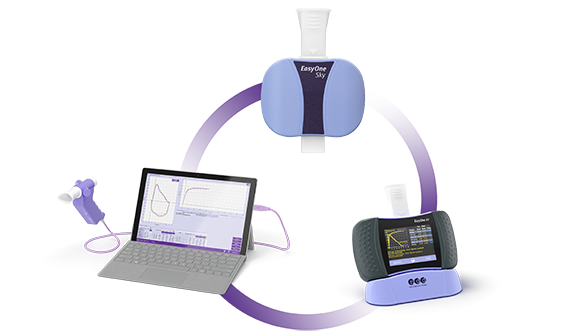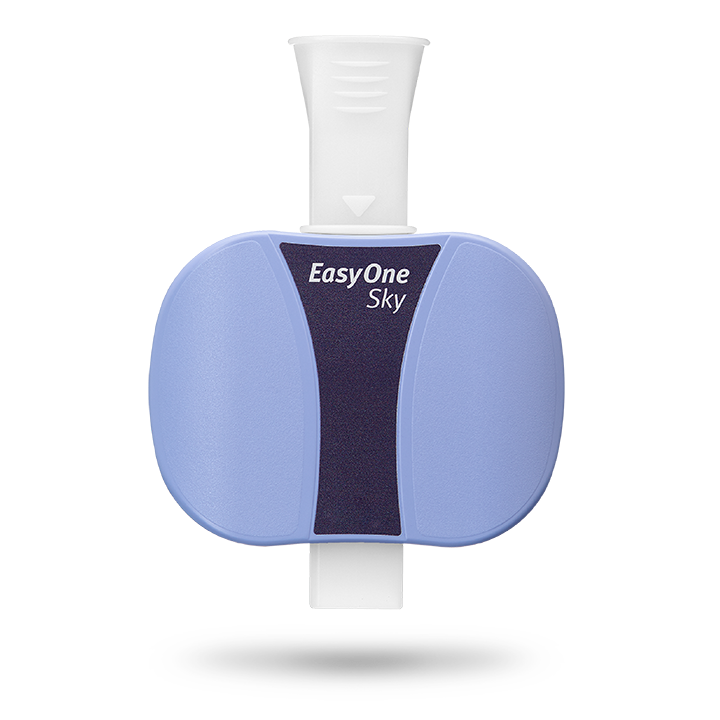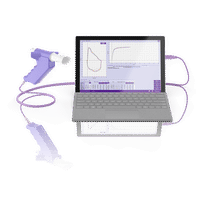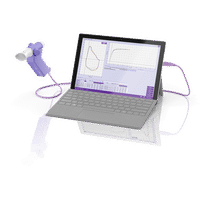From misdiagnosis to clarity with spirometry in COPD

Imagine you’re dealing with shortness of breath and a cough. You can’t remember when exactly they started but now these symptoms are affecting your daily life, leading you to alter your behavior. What you thought was a cold or a natural part of aging has persisted for months. Finally, one day, your doctor observes that you have these symptoms and based on clinical evaluation, diagnoses you with asthma. After several months without any improvement, your doctor recommends you perform spirometry to get to the bottom of what’s going on. After several months of respiratory symptoms and treatment for asthma, you finally learn you don’t have asthma but chronic obstructive pulmonary disease, one of the most common and burdensome lung diseases in the world.
How much did that delay in a diagnosis impair your quality of life? What if you had gotten diagnosed within weeks of symptom onset, before you even started to alter your life, instead of starting the wrong treatment?
This is the experience of more than half of the people living with symptomatic COPD, many of whom are still in that period between symptom onset and formal diagnosis or who have received an incorrect diagnosis altogether.1 This is a crisis, one that can be mostly prevented. But how?
With spirometry — a simple, reliable, proven pulmonary function test that brings clarity and ensures patients get on the right path earlier.
Why spirometry should come first in COPD care #
Respiratory symptoms are common, affecting tens of millions of Americans at any given time. But many things cause respiratory symptoms, from aging to chronic pulmonary diseases to respiratory infections to smoking. The causes of respiratory symptoms are also all not treated the same. It’s not uncommon for people to mistake their respiratory symptoms that are indicative of something more serious as banal until they begin to alter their lifestyle.2 It’s essential that providers correctly identify the cause of the respiratory symptoms as soon as possible. Delays in diagnosis can profoundly impact long-term outcomes.3
Spirometry is thus a key tool for differentiating between and diagnosing pulmonary conditions. While asthma and COPD can both cause shortness of breath, airflow obstruction in asthma is typically responsive to bronchodilators and therefore transient. Their spirometry results will show an increase in forced expiratory volume in the first second (FEV1) after bronchodilator administration. COPD on the other hand causes fixed airflow obstruction. When a person with COPD performs spirometry, their FEV1/forced vital capacity ratio (FEV1/FVC) results don’t change after bronchodilator use.
Even though the Global Initiative for Obstructive Pulmonary Disease mandates that spirometry is performed to confirm a diagnosis of COPD,4 5spirometry is still underused in the clinic.1 While symptoms, clinical examination, and exposure to risk factors may be sufficient to suspect a patient has COPD, fixed obstruction documented through spirometry is what confirms a diagnosis of COPD.
When relying on clinical observation alone, COPD is often misdiagnosed.
The use of spirometry early in the evaluation process enables clinicians to get their patients on the right care path as soon as possible, which is especially important in pulmonary conditions. Early diagnosis is important and spirometry guides treatment decisions. When people are diagnosed later in their disease journey, their health suffers: Exacerbations and hospitalizations become more frequent, and these can shorten life expectancy.3 46Poorly controlled COPD leads to more readmissions, a major source of healthcare utilization.7 When COPD is diagnosed earlier, progression can be slowed and people can live with a higher quality of life.8 It also ensures people aren’t treated for a condition they don’t have, which can be actively harmful and only serves to delay those people from getting the right treatment.
EasyOne spirometry machines - tailored solutions for every practice.
Explore our spirometry machines
In addition to its powerful diagnostic functionality, spirometry is also an effective tool to monitor disease progression and assess prognosis. Spirometry provides insight into a patient’s baseline pulmonary health, is relatively accessible and inexpensive, and is noninvasive.
Bringing confidence to COPD diagnosis with modern spirometry solutions #
In the past, clinicians viewed spirometry as too complex, inaccessible, or time-consuming to be commonly used. It is true that spirometry used to be those things. But that’s no longer the case.
Today’s devices, including EasyOne spirometers, have overcome the barriers of the past, allowing tests to be completed in as little as just 15 minutes. They are intuitive and easy-to-use, efficient, and seamlessly integrated into modern clinical workflows. With how common it is that people with COPD either don’t get diagnosed early or are misdiagnosed entirely, modern spirometers can help ensure people with COPD get the treatment they deserve, earlier.
Jørgensen IF, Brunak S. Time-ordered comorbidity correlations identify patients at risk of mis- and overdiagnosis. Npj Digit Med. 2021;4(1):12. doi:10.1038/s41746-021-00382-y ↩︎ ↩︎
Yawn BP, Martinez FJ. POINT: Can Screening for COPD Improve Outcomes? Yes. Chest. 2020;157(1):7-9. doi:10.1016/j.chest.2019.05.034 ↩︎
Kostikas K, Price D, Gutzwiller FS, et al. Clinical Impact and Healthcare Resource Utilization Associated with Early versus Late COPD Diagnosis in Patients from UK CPRD Database. Int J Chron Obstruct Pulmon Dis. 2020;15:1729-1738. doi:10.2147/COPD.S255414 ↩︎ ↩︎
Global Initiative for Chronic Obstructive Lung Disease. Global strategy for the diagnosis, management, and prevention of chronic obstructive pulmonary disease (2025 report). https://goldcopd.org/2025-gold-report/ ↩︎ ↩︎
Yawn BP, Mintz ML, Doherty DE. GOLD in Practice: Chronic Obstructive Pulmonary Disease Treatment and Management in the Primary Care Setting. Int J Chron Obstruct Pulmon Dis. 2021;16:289-299. doi:10.2147/COPD.S222664 ↩︎
Halpin DM, Miravitlles M, Metzdorf N, Celli B. Impact and prevention of severe exacerbations of COPD: a review of the evidence. Int J Chron Obstruct Pulmon Dis. 2017;12:2891-2908. doi:10.2147/COPD.S139470 ↩︎
Shah T, Press VG, Huisingh-Scheetz M, White SR. COPD Readmissions. Chest. 2016;150(4):916-926. doi:10.1016/j.chest.2016.05.002 ↩︎
Celli BR, Decramer M, Wedzicha JA, et al. An official American Thoracic Society/European Respiratory Society statement: research questions in COPD. Eur Respir Rev. 2015;24(136):159-172. doi:10.1183/16000617.00000315 ↩︎
Written by

Tré LaRosa
Tré LaRosa is a consultant, scientist, and writer in the Washington, DC area with extensive experience working in research (basic, translational, and clinical) and on patient-reported outcomes. He has also written extensively on neuroscience, pulmonology, and respiratory conditions, including from the patient perspective. He enjoys learning, reading, writing, spending time outdoors, and telling everybody about his mini golden retriever, Duncan.














